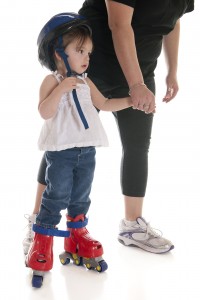
Everyone has heard the phrase, “Birds of a feather flock together.” Once in a while, there is a news story about the lone, odd duck hanging out with the gaggle of geese, but those stories only make the news because they are exceptional. People tend to have their groups, and one of the experiences everyone faces is figuring out which flock they belong in.
Throughout their lives, your kids will be in many different groups. Some will be of their own choosing and some groups will be forced upon them, as in school study groups. Finding their way in the groups and where they sit the pecking order is something that they will have to figure out for themselves for the most part, but you can offer some guidance.
While it may be tempting for you to handpick the right group for your kids, it is not helpful for them in the long run. Generally, a better solution is to provide solid parental guidance concerning how to select friends. It is up to them to hear what you say, but also to listen to their own Internal Guidance System. With this combined approach, they will learn to find others that they can connect with on their own.
Early in their lives, your kids will experience others who are just “there.” These potential friends include family members and the children of your friends. Although these groups sometimes last, it’s not very often. There is no reason to expect that just because your best friend has a daughter the same age as yours that the kids will become, or remain, BFFs.
And your child may not like your friend’s child, either. Their personalities could be very different. So, rather than insist that your kids hang out with people they don’t like, it’s good to help them learn how to relate to many different people and personality types. Coach them to check in with how they feel when they are with other people, too.
If someone makes them uncomfortable, help your kids to figure out why. Is it just that these people are “different”? Perhaps they have never met someone like the person in question before, and you can help them to recognize that different is not necessarily bad. You can also help them to distinguish between the unknown or new and the unpleasant or undesired.
An analogy that is easy for kids of any age to understand concerns ice cream. Some kids like vanilla ice cream. Over time, they may try new flavors and discover that they prefer chocolate or strawberry ice cream. Some will have a favorite flavor, while other kids will like lots of variety. The only way to know their preferences for sure is through encouraging them to try things that interest them.
Like ice cream, the same is true of people. When kids give themselves the chance to be around a variety of people, they get a better sense of the type of people they prefer to be with. Maybe your kids like the other kids in your neighborhood, and maybe not. It’s really up to them to learn who they’re comfortable with through a long period of trial and error.
However, recognize that during any lifetime, tastes change. Someone your son or daughter liked when they were six may not be who they like at 11 or 20. The paths they follow in life will also tend to dictate which people they choose to be with and those they have to “get along” with, even when they don’t like them. This is really important, especially in formal situations like in school and later, in their jobs.
Just support your kids when they want to meet new people, and remind them that some friendships will last their entire lives while others may only last a summer. Help them to be true to themselves, and they will always be able to find flocks to call their own.
What are your thoughts?
© 2014. Sharon Ballantine. All Rights Reserved.

